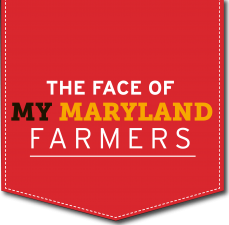Genetically Modified Organisms (GMOs)
Genetically modified organisms, or GMOs, are crops that have been developed using a more precise method of plant breeding called genetic engineering. Basically, scientists can alter the genetics of the crops to create benefits for farmers and consumers. These benefits include things like insect resistance, drought tolerance, disease resistance, enhanced nutritional content, less food waste and streamlined manufacturing processes. For over two decades, GMOs have been used safely and research shows that they pose no harm to human health.
Learn More
GMOs 101: Your Basic Questions Answered (US Department of Agriculture) – https://www.nal.usda.gov/sites/www.nal.usda.gov/files/agricultural_biotechnology_gmos_101.pdf
Science of GMOs (UConn CAHNR) – https://gmo.uconn.edu/wp-content/uploads/sites/2238/2019/05/GMO-Fact-Card_Feb2019.pdf
Learn From Experts (CropLife International) – gmoanswers.com
Pesticides
Farmers, whether they use conventional or organic methods, use pesticides to protect their crops from damage caused by weeds, insects and diseases. These amazing tools save farmers billions of dollars every year and can even help them adopt sustainable practices like no-till and cover crops. Pesticides are thoroughly tested and reviewed on a regular basis to make sure they’re safe for humans and our environment. In fact, government agencies are hard at work to keep pesticide residue levels far below any potential health risks.
Learn More
Fertilizers & Pesticides (US Department of Agriculture) – https://www.ers.usda.gov/topics/farm-practices-management/fertilizers-pesticides/
Food & Pesticides (US Environmental Protection Agency) – https://www.epa.gov/safepestcontrol/food-and-pesticides#safe-to-eat
Pesticide Facts (CropLife International) – https://pesticidefacts.org/
Sustainability
Sustainability is a term that denotes our responsibility to the environment, social and economic activities, and management practices that ensure a better future for the planet. Among the many practices, sustainable farming is becoming an increasingly pivotal aspect of reducing our greenhouse gas emissions, sequestering carbon, improving soil quality and protecting biodiversity. Integrating these practices and philosophies requires expert knowledge, public participation and government measures that support farmers’ knowledge and resources.
Learn More
Natural Resource Concerns (US Department of Agriculture Natural Resources Conservation Service) – https://www.nrcs.usda.gov/conservation-basics/natural-resource-concerns
Sustainability: Doing Much More with Less (United Soybean Board) – https://ussoy.org/sustainability/
Building Resilience for Thriving Communities (MD Association of Soil Conservation Districts) – https://mascd.net/wp-content/uploads/2023/01/2022-MASCD-Annual-Report.pdf
Bio-Based Products
Bio-based products are made from renewable plant or animal-based resources. These products, ranging from building materials, cleaning supplies, furniture, office supplies, cosmetics and more, are designed to replace traditional products that are made from non-renewable sources such as petroleum or natural gas. Bio-based products are usually biodegradable and have a much lower carbon footprint than traditional products. They also reduce reliance on non-renewable resources, which helps to preserve these resources for future generations.
Learn More
Bio-Preferred Program (US Department of Agriculture) – https://www.biopreferred.gov/BioPreferred/faces/Welcome.xhtml
Soy Biobased: Rapidly Renewable and Made In America (United Soybean Board) – https://www.soybiobased.org/
Why Biodiesel? (Clean Fuels Alliance America) – https://www.biodiesel.org/what-is-biodiesel/why-biodiesel
My Maryland Farmers
Next time you have a question about Maryland farms, don’t ask Google, ask My Maryland Farmers.
Discover more of the incredible work that Maryland’s farmers are doing by visiting My Maryland Farmers. You’ll be amazed to read their stories about their lives in agriculture.




